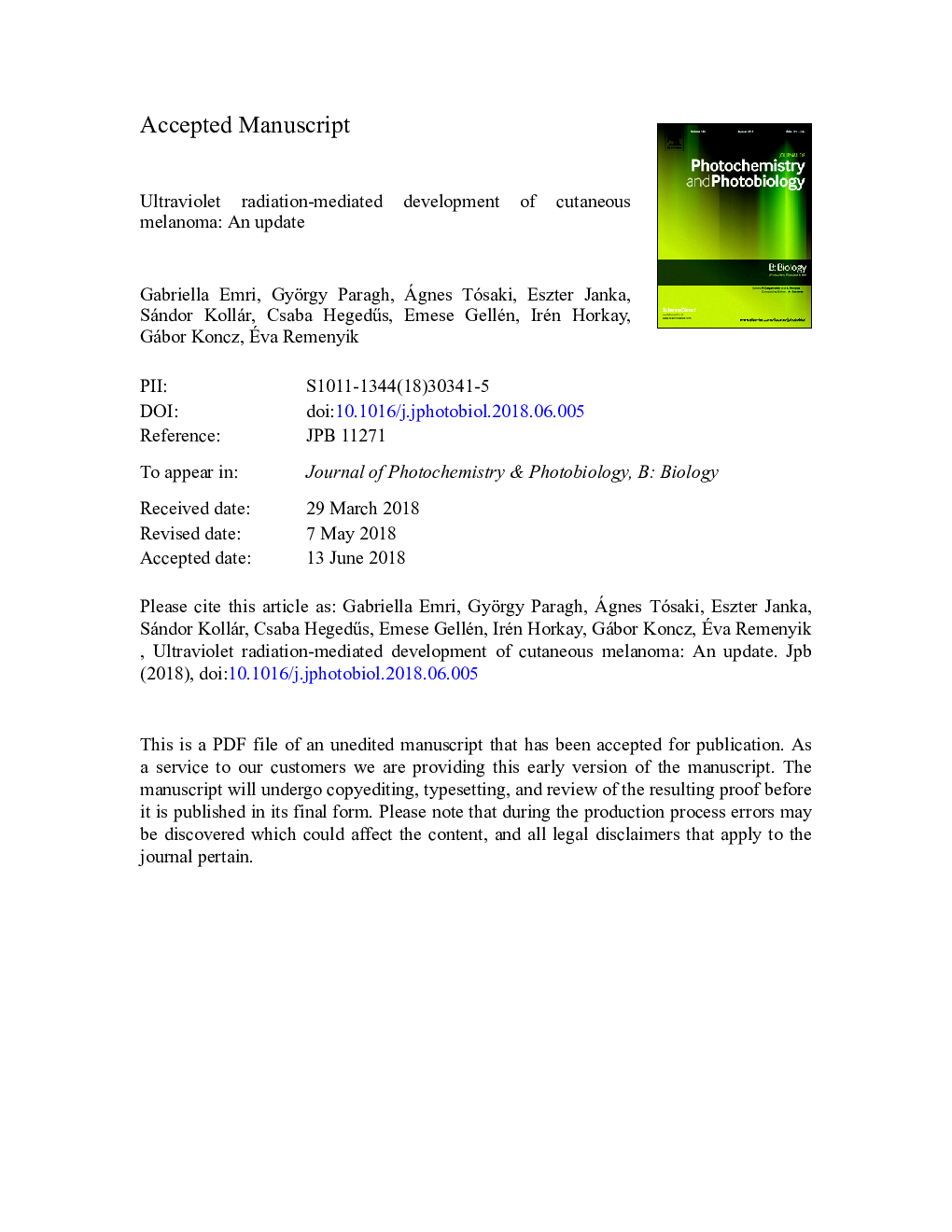| Article ID | Journal | Published Year | Pages | File Type |
|---|---|---|---|---|
| 6493226 | Journal of Photochemistry and Photobiology B: Biology | 2018 | 19 Pages |
Abstract
Ultraviolet (UV) light is absorbed by nucleic acids, proteins or other endogenous chromophores, such as porphyrins, flavins and melanin, triggering biological processes in skin cells. Both UV-induced mutations in melanocytes and changes in the immune microenvironment are understood to play a role in the development of cutaneous melanoma. The degree of UV-induced stress and the protection against this stress are influenced by both intracellular and intercellular molecular interactions. The present review summarizes the known major molecular biological changes induced by UV light in the skin that play a role in melanoma initiation and promotion. Nevertheless, cutaneous melanoma is not a homogenous disease, and the interaction of variable environmental exposure and different genetic susceptibility and other host factors lead to the formation of melanomas with different biological behavior and clinical characteristics. This review highlights the challenges in the understanding of how UV radiation contributes to the formation of cutaneous melanoma, and reviews the new results of photobiology and their link to tumor genetics and tumor immunology with potential implications on melanoma prevention and therapeutic strategies. The information presented here is expected to add clarity to ongoing research efforts in this field to aid the development of novel strategies to prevent and treat melanoma.
Related Topics
Physical Sciences and Engineering
Chemical Engineering
Bioengineering
Authors
Gabriella Emri, György Paragh, Ágnes Tósaki, Eszter Janka, Sándor Kollár, Csaba Hegedűs, Emese Gellén, Irén Horkay, Gábor Koncz, Ãva Remenyik,
